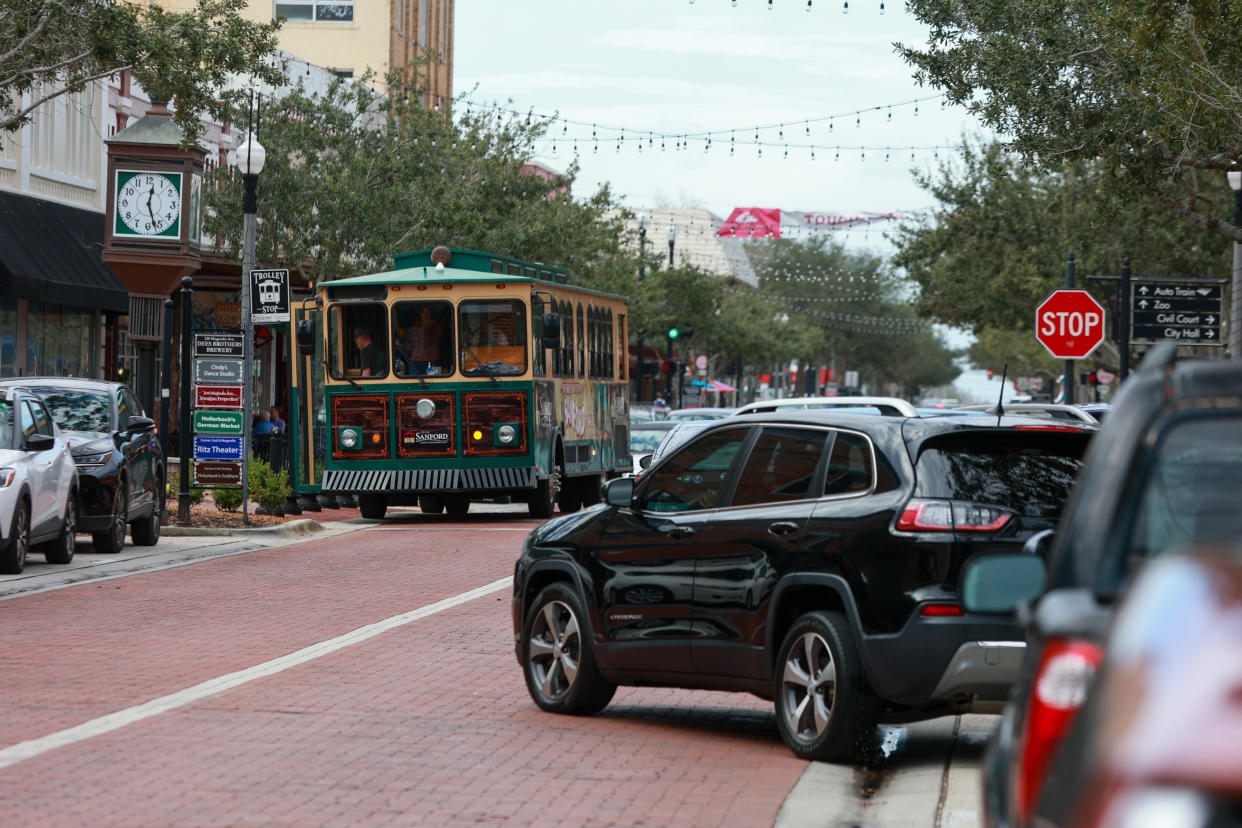Sanford looks to solve its parking woes

Downtown Sanford has turned into a popular destination for visitors to enjoy a meal or grab a cold one, after the city dedicated millions of dollars toward attracting new restaurants, craft breweries and events.
But the vibrant downtown has come with another cost: Frustrated motorists trying to find a parking spot, with some resorting to parking illegally or even creating their own spaces on the sidewalks.
Now, Sanford officials plan to look at how other Central Florida municipalities have grappled with the common urban conundrum of keeping their downtowns lively but providing enough spots for vehicles.
“I’m not an expert on parking, but I know that there is a problem, and we need to form a solution,” said city Commissioner Sheena Britton, whose district includes the downtown commercial and historic areas. She brought up the concern at Monday’s commission meeting.
The parking woes are especially troublesome, Britton noted, along Palmetto, Magnolia and Sanford avenues, at the intersections of Second, Third and Fourth streets. The area is a mix of historic homes, restaurants, breweries, shops and the Ritz Theatre.
“Most of the events happen in that little corridor, especially on Palmetto and Second down to First Street,” she said.
Many of the historic homes — some almost a century old, and sitting adjacent to the commercial district — lack driveways or garages. So residents park on the streets, competing with visitors to downtown.
Sanford could do a better job cracking down on parking scofflaws, especially motorists who illegally leave their cars in “No Parking” zones or with their rear bumpers almost into the intersection, commissioners said.
But Tony Raimondo, Sanford’s development services director, which oversees code enforcement, said the city issued 242 citations last year, a jump of 40 from the previous year.
Even so, Police Chief Cecil Smith said he hesitates pulling officers away from other duties to stick parking tickets on windshields.
“I’d love to have four more officers downtown. But we don’t,” he said. “Our primary focus is always going to be making sure that the people in the community are safe.”
Denny Gibbs, who has lived in Sanford’s historic district for 25 years, said the parking situation has long been “a pet peeve” of hers.
She pointed out that while many homes near downtown lack driveways, nearly every house in the neighborhood has a side alley where homeowners could park. Instead, they’re using the streets, said Gibbs, a former urban planner.
Gibbs added there are plenty of parking spaces east of Sanford Avenue near the Civic Center, but most people want to park close to where they are going.
“It’s a tough problem,” she said. “Sanford really needs to have a little foresight on this. They really need a parking garage or a big surface parking lot.”
In downtown Winter Park, shoppers and diners have long faced frustration finding parking spots along the popular Park Avenue corridor. Business owners have complained the lack of spaces prevents people from visiting their establishments.
Winter Park has tried to improve matters by opening about 100 spaces to the public at City Hall, temporarily installing sensors to help motorists find open spots, and revamping its parking codes to crack down on violators.
The five-story Park Place Garage at Park and Canton avenues was completed in 2005 and provided hundreds of spaces.
In Orlando, city officials are drawing up plans for a long-planned urban park under the concrete lanes of Interstate 4 just west of Garland Avenue.
Besides turning the area into festival space, landscape park, and outdoor art venue, a proposal is to add 500 parking spaces to replace the 900 spots stripped out years ago during the widening of I-4.
But in Sanford, city leaders agree that their parking dilemma is not easily fixed.
“Our number 1 parking problem is that people can’t park right in front of where they want to go,” Commissioner Patrick Austin said. “It’s quite a conundrum.”

